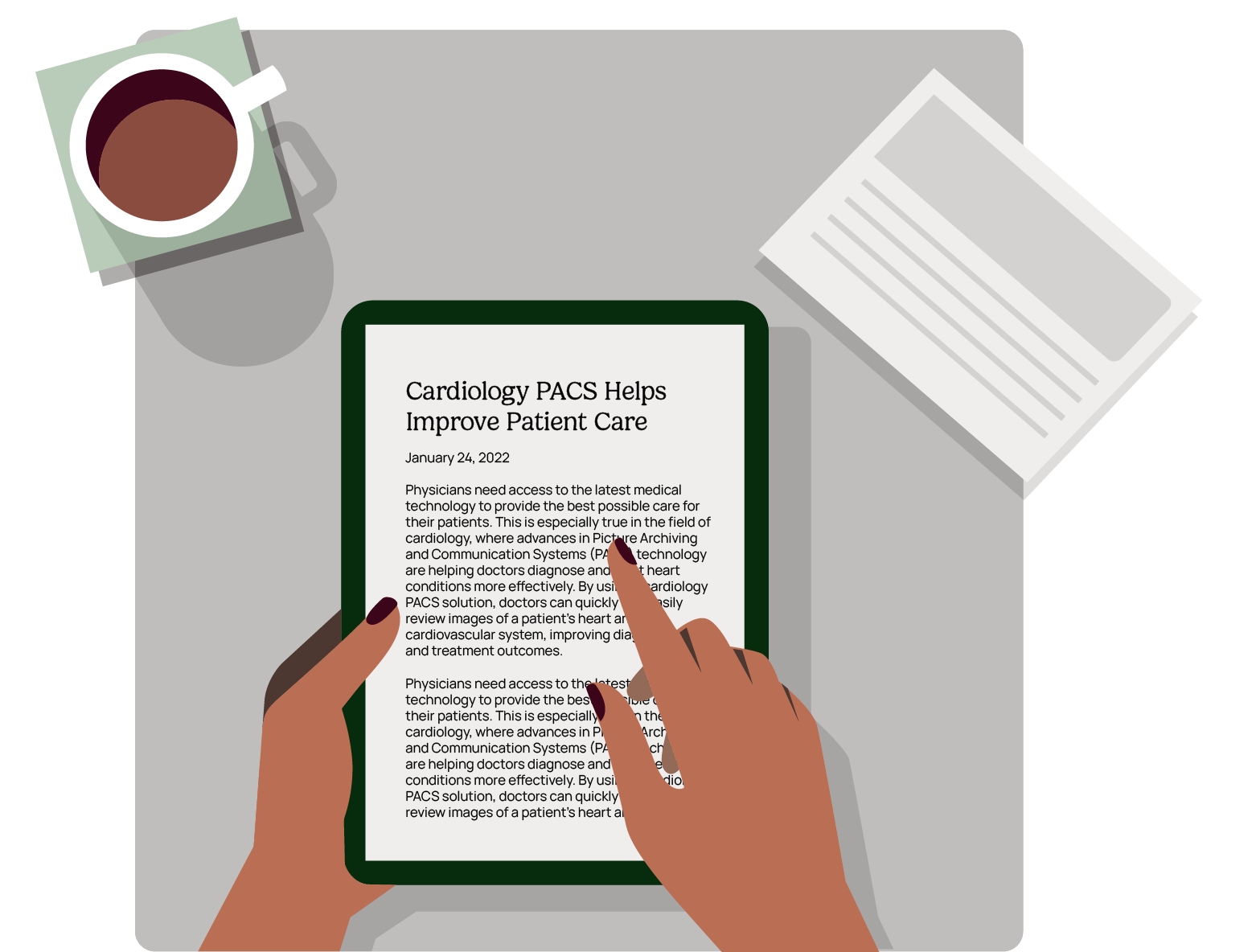January 24, 2022
Physicians need access to the latest medical technology to provide the best possible care for their patients. This is especially true in the field of cardiology, where advances in Picture Archiving and Communication Systems (PACS) technology are helping doctors diagnose and treat heart conditions more effectively. By using a cardiology PACS solution, doctors can quickly and easily review images of a patient’s heart and cardiovascular system, improving diagnosis times and treatment outcomes.
Physicians need access to the latest medical technology to provide the best possible care for their patients. This is especially true in the field of cardiology, where advances in Picture Archiving and Communication Systems (PACS) technology are helping doctors diagnose and treat heart conditions more effectively. By using a cardiology PACS solution, doctors can quickly and easily review images of a patient’s heart and cardiovascular system, improving diagnosis times and treatment outcomes.
Cardiology PACS helps improve interdepartmental communication and speed of patient care. PACS allows medical imaging information to be securely transmitted and stored for interdepartmental retrieval and studying. Cardiovascular Information Systems (CIS) integrate various tools and workflows to improve patient care in cardiology departments. In this article, we discover the importance of PACS in cardiology, plus the benefits it can lead to with regard to efficient patient care.
PACS are an efficient way to securely store private patient medical imaging information. They can replace the manual filing of film jackets or the physical transportation of files. In addition, documents and images of the patient can be securely housed locally or offsite on secure servers, allowing them to be accessed using software, workstations, and mobile devices for improved productivity in healthcare settings.
What are PACS in Cardiology?
PACS in cardiology medicine is defined as secure medical imaging information used by cardiologists and technicians when dealing with inpatient care. This is not to be confused with a heart arrhythmia condition known as Premature Atrial Contractions, also referred to as PAC.
Cardiology departments can suffer from siloed systems and may have resorted to connecting disparate systems to better communicate with other departments and provide faster access to patient data and images.
DICOM (Digital Imaging and Communications in Medicine) allows several imaging modalities to transmit and store information securely. And since cardiology studies are often dynamic in motion and include audible data, the file sizes can be massive. A single study can range from 200 MB to 1 GB. By storing cardiology data in PACS, these departments reap the benefits of shared or centralized systems rather than siloed systems and separate management of data.
Furthermore, the shift to cardiology PACS is part of a greater effort by healthcare providers facing increased pressures to reduce cost, improve access to data, and enhance services for patients.
What is a Cardiovascular Information System (CVIS)?
Cardiology departments require a workflow to connect the various tools they use. A CVIS (Cardiovascular Information System) is a cardiac MRI software reporting system that bridges the overall patient EMR (Electronic Medical Record) with other systems including cardiac imaging, echo reporting, diagnostic testing (ECG) reporting, cath lab hemodynamics systems, cardiac patient data, imaging, and waveforms.
Benefits
Thanks to efficient workflows and centralized data access, physicians can spend more time with patients and less time at the computer with cardiology PACS. The system is designed to make it easier for cardiology teams to work together. It provides tools that allow different groups in hospitals or medical facilities to share data and images quickly. As a result, cardiologists can arrive at meaningful insights and diagnoses faster than ever before with powerful analytics.
In Summary
Cardiologists who use PACS can better diagnose problems and make treatment decisions. This can result in shorter hospital stays for patients, fewer complications, and even reduce the cost of care.
To provide patients with timely and accurate information from their cardiac scanning, cardiologists need a solution that delivers efficient communication between different departments within the hospital. A PACS system for cardiovascular imaging provides this type of efficiency by putting all cardiac images in one place on a network server accessible by anyone who needs them. These solutions also offer advanced tools that help reduce diagnostic errors and improve patient care. If you’re interested in learning more about how our cardiology PACS solution could benefit your organization, book a demo today.





